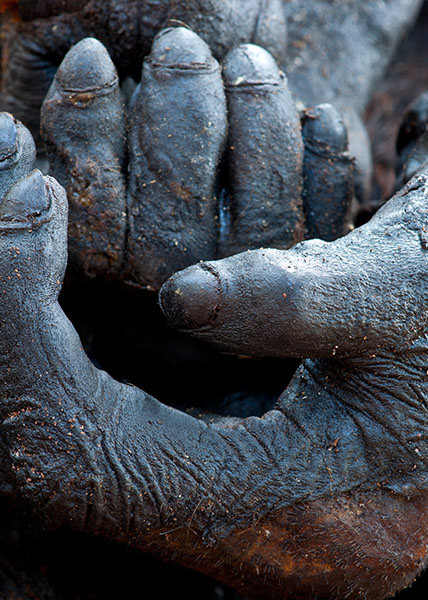The Art for Science Exhibition: Why Art for Science
Often, when people think about science, they think about abstract information, data, formulas, etc, that are hard to read, understand or interpret.
Using imagery to explicate science is one way scientists can explain the unexplainable to lay people in a way they can relate with.
This is the thinking behind the establishment of the “Art for Science” – a Public Engagement with Science (PES) initiative of the Science for Africa (SFA) Foundation.
Disclaimer: The images used on this website belong to Science Photo Library and are used solely for illustrative purposes. We do not claim ownership or copyright over these images. All visual content is the property of the respective owners.
Climate & Planetary Health
Involves analysing and addressing the impacts of human disruptions to Earth’s natural systems on human health and all life on Earth.
There is no doubt that our global environment is changing due to the negative footprint of human actions.
From global scale pollution of air, water, and soil; to shortages of arable land and freshwater; pervasive changes in land use and cover; and degradation of marine systems.
These changes affect the quality of the air we breathe and of the water we drink, the quality and quantity of food we produce, our exposure to infectious diseases, and even the habitability of the places where we live.
One Health
One Health is an integrated, unifying approach that aims to sustainably balance and optimize the health of people, animals, and ecosystems.
One Health recognizes the health of humans, domestic and wild animals, plants, and the wider environment (including ecosystems) are closely linked and inter-dependent.
Western Gorilla severed and smoked hands and feet
Hunter with gun near Dead Crowned monkey
Ebolavirus entering a cell
Ebola virus
Brucella bacteria, animation
Rabies virus particle, animation
COVID – 19
COVID-19 has challenged healthcare systems, public health infrastructure, and governments worldwide, resulting in unprecedented levels of global cooperation and innovation to combat the virus.
COVID-19, also known as the novel coronavirus, has been recognized as the pandemic of the century due to its widespread and devastating impact on the world's population.
Malaria
Is a life-threatening disease caused by parasites that are transmitted to people through the bites of infected female Anopheles mosquitoes.
There are four (4) parasite species that cause malaria in humans. Plasmodium falciparum is the deadliest malaria parasite and the most prevalent in Africa.
Mosquito larvae (C031/0112)
Malaria mosquito larva, light microscopy
Malaria mosquito biting human skin
Anopheles gambiae mosquitoes after feeding
Stop Malaria sign, Ganta, Liberia
Blood tests for malaria, Malawi, 2015
Examining blood samples for malaria
Neuroscience
Is the science of the brain and the nervous system. The field of neuroscience remains largely dominated by industrialized nations, but Africa presents unique opportunities and can make significant contributions to global research in this space.
Overall, populations in Africa have the greatest genetic diversity with important implications for understanding human diseases (including neurological disorders), live in diverse eco systems, and face unique stresses to brain health and development.
Neuromuscular junctions
Thrombotic stroke pathology
Smiling boy
Mental Health
Mental health is a state of mental well-being that enables people to cope with the stresses of life, realize their abilities, learn well, and work well, and contribute to their community. (WHO)
Poor mental health reflects through illnesses such as anxiety, depression, addiction, suicide, psychosis, epilepsy, and schizophrenia. In Africa, mental illness is still highly stigmatized and health services are poorly developed.
The Africa we Aspire for & work to contribute towards
Is a prosperous Africa based on inclusive growth and sustainable development (Africa Union, Agenda 2063 – Aspiration 1)
In addition, we aspire for a continent that is resilient to the impact of climate change, with strategies in place to mitigate its effects on the health and wellbeing of its people.
A critical mass of scientists supported to stay and work on the continent.
Scientist in hijab filling pipette tray at fume hood (F032/5434)
Safe, available, accessible, and affordable medicines.
Medicine in Africa (C026/8882)
A sustainable planet
Great Green Wall construction, Senegal (C028/4149)
Food security
Inspiring young minds
Group of school children standing outside (F034/2216)
Happy friends hanging out and hugging (F031/2079)
Acknowledgements
We would like to acknowledge:
Science Photo Library for the science and medical images and videos ,
SFA Foundation for ideation ,
Wellcome our funding partner ,
Kihingu Inc for this great website .
More about us
Go to SFA Foundation
Disclaimer: The images used on this website belong to Science Photo Library and are used solely for illustrative purposes. We do not claim ownership or copyright over these images. All visual content is the property of the respective owners.
















